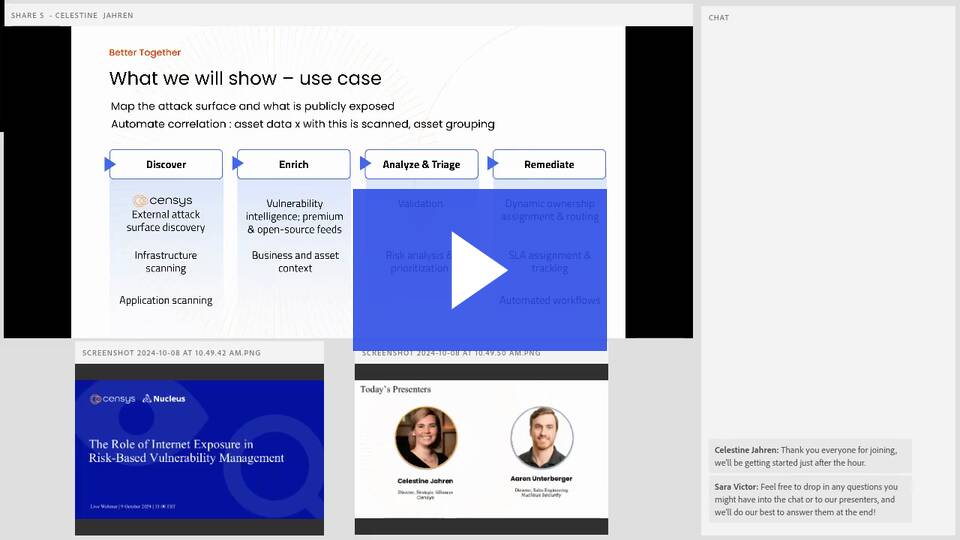Understand How Internet Exposure Impacts Vulnerability Management and Cyber Risk

As organizations continue to embrace digital transformation, their infrastructure increasingly spans cloud environments, third-party integrations, and remote work setups. This shift enhances efficiency and productivity—but also broadens the digital attack surface, creating new points of exposure to the public internet.
Today’s enterprise networks are no longer confined within on-premises data centers. Instead, they extend into hybrid and multi-cloud setups, covering diverse systems, applications, and devices. In these environments, IT assets often have public-facing elements or external connections that serve legitimate business purposes but may also inadvertently expose the organization to cyber risks. As a result, maintaining visibility across the attack surface has become an increasingly complex task.
Because of this, cybersecurity practices must adapt. Understanding internet exposure is fast becoming a cornerstone of modern vulnerability management. The topic of internet exposure was the centerpiece of a recent webinar I was a guest on with Celestine Jahren from Censys. In this article, I’ll explore the relationship between internet exposure and vulnerability management a bit further.
First, let’s start off with the basics.

2024.10 WE PROS GLOBAL The Role of Internet Exposure in Risk Based Vulnerability ASM-recording
What Is Internet Exposure, and Why Does It Matter?
Internet exposure refers to the collection of all assets within an organization that are accessible from the public internet—whether intentionally or unintentionally. Exposed assets can include open ports, web applications, APIs, cloud storage, and even forgotten servers or devices left online. These assets can be inadvertently overlooked, misconfigured, or unmonitored, leaving them vulnerable to attackers.
The stakes are high: attackers continuously scan the internet, searching for exposed assets as potential entry points. Even a single exposed, unpatched system can provide a foothold for an attacker to escalate privileges, move laterally across the network, or launch ransomware. Understanding and managing internet exposure is vital for organizations that want to reduce the likelihood and impact of cyber incidents.
The Role of Internet Exposure in Vulnerability Management
Traditional vulnerability management has typically focused on identifying and remediating vulnerabilities within an organization’s internal infrastructure. This makes sense, especially early on when organizations had fewer externally facing assets. With more closed networks and a more on-premises infrastructure, more focus was placed on securing internal assets.
That reality changed as organizations began to adopt a more connected information architecture and way of doing business. Our approach to vulnerability management, by necessity, needed to expand to encompass external, internet-facing assets. Security teams can no longer afford to focus solely on known internal vulnerabilities; they must now prioritize based on real-world exposure, assessing where the organization’s digital footprint may be most vulnerable to exploitation.
In practice, this means that visibility alone is insufficient. Organizations need insights into which exposed assets carry the greatest risk, considering both technical severity and exposure factors like asset type, business impact, and proximity to sensitive data. This risk-based approach to vulnerability management helps security teams allocate resources more effectively, protecting the most critical assets while avoiding wasted effort on low-risk items.
Key Challenges Facing Vulnerability Management Teams
Despite the clear benefits, integrating internet exposure into vulnerability management poses some significant challenges:
- Asset Visibility: Many organizations lack a comprehensive inventory of their internet-facing assets. This includes “shadow IT” (unauthorized or unknown assets) as well as outdated systems that may be forgotten or misconfigured.
- Dynamic Environments: Exposure can change rapidly as teams deploy new applications, devices, or services. Internet-connected assets and configurations must be continuously monitored to detect any unintended exposure.
- Speed of Exploitation: Attackers are scanning for vulnerabilities faster than ever, often within hours of a new vulnerability’s disclosure. While not every vulnerability is exploited right away, there is an increased need to secure internet-facing assets. This puts pressure on security teams to identify and remediate exposed vulnerabilities before they can be exploited.
- Resource Constraints: Cybersecurity teams often face a shortage of resources, both in personnel and budget, making it challenging to maintain a continuous and comprehensive internet exposure management program.
Best Practices for Incorporating Internet Exposure Insights
A comprehensive vulnerability management strategy should address both internal and external assets, emphasizing continuous visibility, prioritization, and actionable insights. Here are key practices to consider:
- Continuous Monitoring: Implement continuous or frequent scanning of internet-facing assets to maintain real-time visibility. This practice helps identify unexpected exposures, such as open ports or misconfigured settings, that may have been introduced through routine updates or deployments.
- Prioritize by Exposure and Risk: Instead of relying solely on technical vulnerability severity, incorporate exposure and business impact into your risk assessments. For instance, a high-severity vulnerability on an internal system may pose less risk than a lower-severity vulnerability on a public-facing web server.
- Collaboration Across Teams: Cybersecurity teams should work closely with IT, DevOps, and application development teams to integrate secure practices into deployment workflows. Automated alerts for exposed assets and misconfigurations can help development and IT teams address issues before they become security risks.
- Periodic Audits and Assessments: Regularly assess internet-exposed assets to verify proper configurations, close unnecessary access points, and ensure that all systems are patched and up to date. Automated discovery tools can make this process more efficient, minimizing the manual effort required to maintain a secure perimeter.
Shaping the Next Generation of Vulnerability Management
The pace of digital innovation shows no sign of slowing, which means the number of internet-exposed assets will continue to grow. Vulnerability management, as a field, must evolve in response to these changes. In the future, vulnerability management programs will increasingly leverage automated intelligence to prioritize and act on real-time exposure data. This shift to proactive, exposure-aware vulnerability management will enable organizations to better navigate an expanding complex attack surface.
For security teams and organizations at large, understanding and managing internet exposure is no longer optional. It’s an essential component of effective cyber defense, allowing teams to focus resources where they’re needed most and minimize the risk of exploitation in an unpredictable threat landscape.
Incorporating internet exposure management into a vulnerability management strategy can empower organizations to proactively identify and remediate the exposures that matter most. Continuous visibility, risk-based prioritization, and collaboration are all keys to facilitating this exposure-aware approach. Our integrations with tools like Censys make this approach to reducing the modern attack surface a reality.
See Nucleus in Action
Discover how unified, risk-based automation can transform your vulnerability management.































